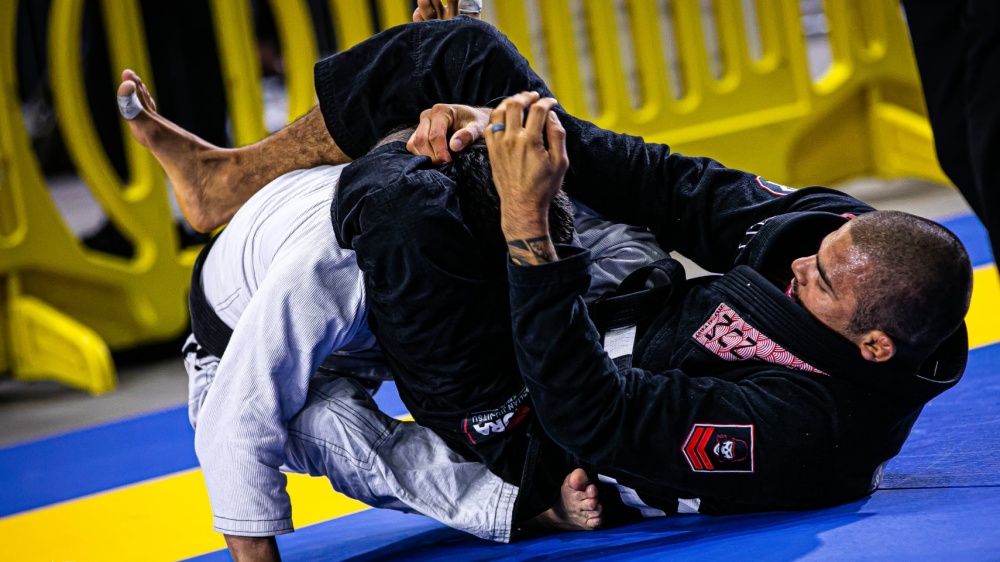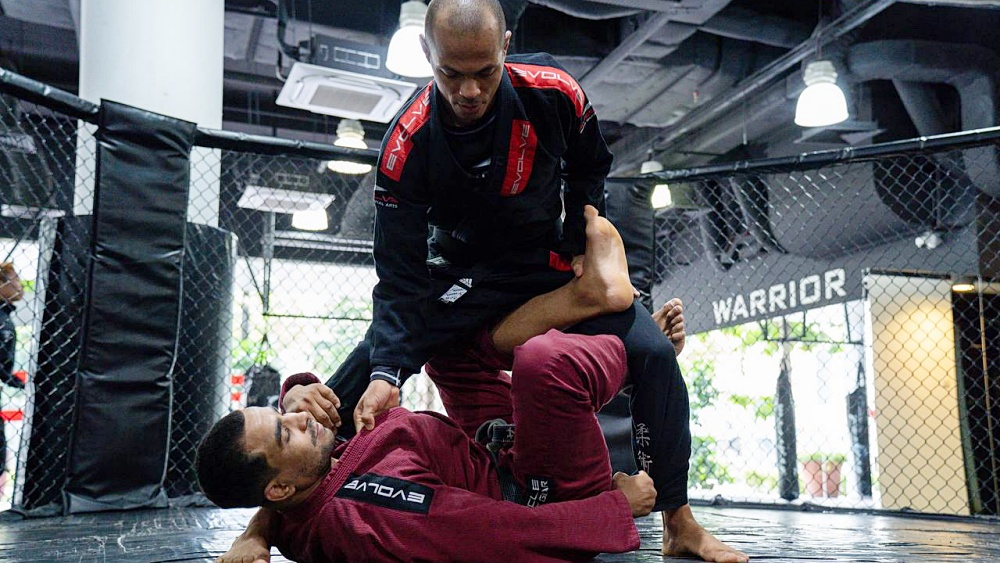It is a common saying in BJJ that the best way to escape a submission is to not get caught in one. While it is easier said than done, getting caught in a submission and tapping in training is integral to your development as a grappler. Getting tapped countless times by the same submission may be frustrating; it reflects a vulnerable area of your game that you have to work on. Today, we will talk about the five must-know triangle escapes for Brazilian Jiu-Jitsu.
How Does A Triangle Work?
The triangle choke is one of the most fundamental submissions in BJJ. It is performed by wrapping your legs around the opponent’s neck and their arm inside your “triangle” while leaving the other arm outside. The constricting pressure that comes from your thighs disrupts the blood flow inside the opponent’s carotid arteries on the sides of their neck. When applied tight enough, the triangle can effectively put someone to sleep if left unchecked.
The danger doesn’t stop when you get triangled, as the threat of an armbar is also present if you leave your trapped arm sticking out. The triangle can be applied from many positions; therefore, grapplers must understand how the submission works to be able to recognize the danger of the submission in different situations.
How To Escape The Triangle?
Typically, the triangle choke has different stages, from early to late. Triangles can be set up differently, and some are excellent with setting it up by explosively lashing into their opponents (flying triangle), leaving no time to react. A deep, well-executed triangle is usually enough to put you to sleep, so you must be extra cautious when escaping. Below are several triangle choke escapes you must add to your game.
1) Early Triangle Escape
The early stage of the triangle is when the opponent’s legs are in the diamond position. What the opponent wants to do to finish the triangle is to break your posture down, fully lock their triangle, put your trapped arm across their body, and squeeze for the finish.
Naturally, as the defender, you want the opposite to happen. As soon as you feel the opponent starts locking in the diamond position, you need to bring your trapped hand’s elbow tight down like a bar across their hip.
Pressure with your elbow down while keeping your shoulder away from your neck while looking up. Next is to bring your knees close, sitting the opponent’s lower back on your lap. This will help you posture up and away. From this position, put your free hand on top of your trapped hand, and push and lean away. Putting your free hand on top of your trapped hand will prevent the opponent from controlling your trapped hand. This position will keep the opponent at bay and exhaust them as they have to sit up to keep the triangle.
This position gives you space to move your trapped arm up and through the opponent’s hamstring to hide your arm. Extend your arm to free it out. From there, you can enter the double under position and start to pass the guard or simply back out and exit the guard.
2) Late Escape
If you are trapped in a tight triangle situation, where the opponent’s legs are fully locked and their body angled to the side, you have to quickly create a lot of space without giving your limbs for the opponent to attack (armbar). Start by posting on your opponent, preferably under their armpit so they won’t be able to bring your arm across their body.
Another way is to lock your hands and pull them across the opponent’s opposite hip to create a bit of separation and room for you to breathe. From there, keep your hands locked, extend your arms, and drive your hips under the opponent’s lower back.
From this position, it’s not enough to wedge and get your trapped arm inside their hamstring to escape anymore. What you have to do is stand up, step over, and lock the opponent’s upper body with your legs. If you get your legs over their upper body and lock it up, and you extend your upper body out, you create a separation that can open the triangle.
Keep in mind that what happens many times is that as you try to perform the escape and you’re sitting on the mat, and the opponent takes your locked feet off their upper body, they can readjust the triangle, and you might end up in a more threatening situation.
What you can do is lock both your arms and extend them to the opponent’s chest. Bring your knees in towards your glute, and once stable, place your feet on the opponent’s bicep to secure the inside position. If the opponent tries to free their arms, you can use your arms to control their wrists. You can then safely cross your feet across their body and give your time to open up the triangle and recover.
3) Posturing Up
Posturing up is a common way to escape the triangle. If the opponent has their triangle locked, connect your hands and press on their belly. Extend your arms and look at the ceiling to posture up as you place your knees below their lower back. Place your free hand inside the triangle and push the opponent’s hamstring to end up in the closed guard.
4) Arm Under and Jump Over to Side Control
This escape needs to be performed quickly before the opponent can successfully transition to the omoplata. To start, lock your trapped and free hand underneath the opponent’s glute. Force their body to the side of your trapped arm. If the opponent opens the triangle and transitions to the omoplata, roll under your free arm and use it to post on the mat as you jump to the opponent’s opposite side to land on side control.
5) Leg Pull
Once the triangle is locked, use your trapped arm to grab on the opponent’s near knee. Use your free hand to grab on top of the opponent’s near knee so you can pull their leg below as you drop your trapped arm’s elbow to the mat. Look away to the side to create space and quickly put your free hand inside the triangle to reset the position to closed guard.
Conclusion
Your ability to escape from dangerous positions will give you the confidence to constantly attack in all situations. Training your defenses on different stages of a submission will give you a broader look at various opportunities that might open up as you escape. Knowing to prevent and escape when caught in a submission will significantly level up your game and separate you from the rest of the competition.
You may also like:
















